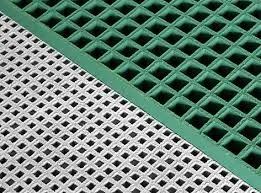
-
 Afrikaans
Afrikaans -
 Albanian
Albanian -
 Amharic
Amharic -
 Arabic
Arabic -
 Armenian
Armenian -
 Azerbaijani
Azerbaijani -
 Basque
Basque -
 Belarusian
Belarusian -
 Bengali
Bengali -
 Bosnian
Bosnian -
 Bulgarian
Bulgarian -
 Catalan
Catalan -
 Cebuano
Cebuano -
 China
China -
 China (Taiwan)
China (Taiwan) -
 Corsican
Corsican -
 Croatian
Croatian -
 Czech
Czech -
 Danish
Danish -
 Dutch
Dutch -
 English
English -
 Esperanto
Esperanto -
 Estonian
Estonian -
 Finnish
Finnish -
 French
French -
 Frisian
Frisian -
 Galician
Galician -
 Georgian
Georgian -
 German
German -
 Greek
Greek -
 Gujarati
Gujarati -
 Haitian Creole
Haitian Creole -
 hausa
hausa -
 hawaiian
hawaiian -
 Hebrew
Hebrew -
 Hindi
Hindi -
 Miao
Miao -
 Hungarian
Hungarian -
 Icelandic
Icelandic -
 igbo
igbo -
 Indonesian
Indonesian -
 irish
irish -
 Italian
Italian -
 Japanese
Japanese -
 Javanese
Javanese -
 Kannada
Kannada -
 kazakh
kazakh -
 Khmer
Khmer -
 Rwandese
Rwandese -
 Korean
Korean -
 Kurdish
Kurdish -
 Kyrgyz
Kyrgyz -
 Lao
Lao -
 Latin
Latin -
 Latvian
Latvian -
 Lithuanian
Lithuanian -
 Luxembourgish
Luxembourgish -
 Macedonian
Macedonian -
 Malgashi
Malgashi -
 Malay
Malay -
 Malayalam
Malayalam -
 Maltese
Maltese -
 Maori
Maori -
 Marathi
Marathi -
 Mongolian
Mongolian -
 Myanmar
Myanmar -
 Nepali
Nepali -
 Norwegian
Norwegian -
 Norwegian
Norwegian -
 Occitan
Occitan -
 Pashto
Pashto -
 Persian
Persian -
 Polish
Polish -
 Portuguese
Portuguese -
 Punjabi
Punjabi -
 Romanian
Romanian -
 Russian
Russian -
 Samoan
Samoan -
 Scottish Gaelic
Scottish Gaelic -
 Serbian
Serbian -
 Sesotho
Sesotho -
 Shona
Shona -
 Sindhi
Sindhi -
 Sinhala
Sinhala -
 Slovak
Slovak -
 Slovenian
Slovenian -
 Somali
Somali -
 Spanish
Spanish -
 Sundanese
Sundanese -
 Swahili
Swahili -
 Swedish
Swedish -
 Tagalog
Tagalog -
 Tajik
Tajik -
 Tamil
Tamil -
 Tatar
Tatar -
 Telugu
Telugu -
 Thai
Thai -
 Turkish
Turkish -
 Turkmen
Turkmen -
 Ukrainian
Ukrainian -
 Urdu
Urdu -
 Uighur
Uighur -
 Uzbek
Uzbek -
 Vietnamese
Vietnamese -
 Welsh
Welsh -
 Bantu
Bantu -
 Yiddish
Yiddish -
 Yoruba
Yoruba -
 Zulu
Zulu
frp pipes and fittings for ship building
FRP Pipes and Fittings for Shipbuilding
In the marine industry, the choice of materials for construction is critical to ensure durability, efficiency, and safety. One of the most innovative materials that has gained popularity in recent years is Fiber Reinforced Polymer (FRP). FRP pipes and fittings are increasingly being used in shipbuilding due to their numerous advantages over traditional materials such as steel and plastic. This article explores the benefits and applications of FRP in the maritime sector.
FRP pipes are composed of a thermosetting resin reinforced with fibers, typically glass, carbon, or aramid. This combination results in a material that is lightweight yet incredibly strong, making it an ideal choice for shipbuilding. The reduced weight of FRP compared to conventional materials allows for increased fuel efficiency and improved performance. Ships that utilize FRP components can carry more cargo without exceeding weight limits, significantly benefiting operational efficiency.
One of the most significant advantages of FRP is its resistance to corrosion, which is a critical factor in maritime environments. Unlike steel, which can succumb to rust and degradation when exposed to seawater, FRP offers exceptional durability and longevity. This resistance minimizes maintenance costs and downtime, allowing ship operators to focus on operations rather than repairs. FRP pipes and fittings can withstand the harsh conditions of marine environments, including exposure to chemicals, moisture, and varying temperatures.
Moreover, FRP is an excellent thermal and electrical insulator. This property is particularly advantageous in shipbuilding where managing temperature and preventing electrical hazards is essential. The insulation provided by FRP helps in maintaining optimal working conditions for onboard equipment and systems, thus enhancing safety aboard vessels.
frp pipes and fittings for ship building

The manufacturing process of FRP also allows for versatile design options. Pipes and fittings can be created in various shapes, sizes, and configurations to meet specific requirements of different ships. This adaptability ensures that shipbuilders can customize installations without the limitations imposed by traditional materials. Additionally, the seamless construction of FRP pipes reduces the risk of leaks and boosts the overall integrity of the system.
FRP technology is not only a boon for new shipbuilding projects but also for retrofitting existing vessels. Older ships can benefit from the replacement of corroded metal piping with modern FRP solutions. This upgrade can extend the life of aging vessels and improve their operational efficiency, thus providing a solid return on investment.
As the maritime industry continues to evolve, the push toward sustainable practices is becoming more pronounced. FRP materials contribute to this initiative by allowing for lightweight construction, which can lead to reduced fuel consumption and lower emissions. Furthermore, the longevity of FRP translates to less waste generated from material replacements over time.
In conclusion, FRP pipes and fittings represent a significant advancement in shipbuilding materials. Their superior strength, corrosion resistance, thermal and electrical insulating properties, and design versatility make them an ideal choice for marine applications. As the industry moves toward more sustainable and efficient practices, the use of FRP will likely continue to grow, making it a key player in the future of shipbuilding. With ongoing advancements in materials and manufacturing processes, FRP is poised to reshape the marine landscape for years to come.









